Sasaki Selected to Design Lake Monona’s Waterfront in Competition
Sasaki’s winning design will create an accessible, activated waterfront and establish a protected shoreline for wildlife to flourish
 Sasaki
Sasaki
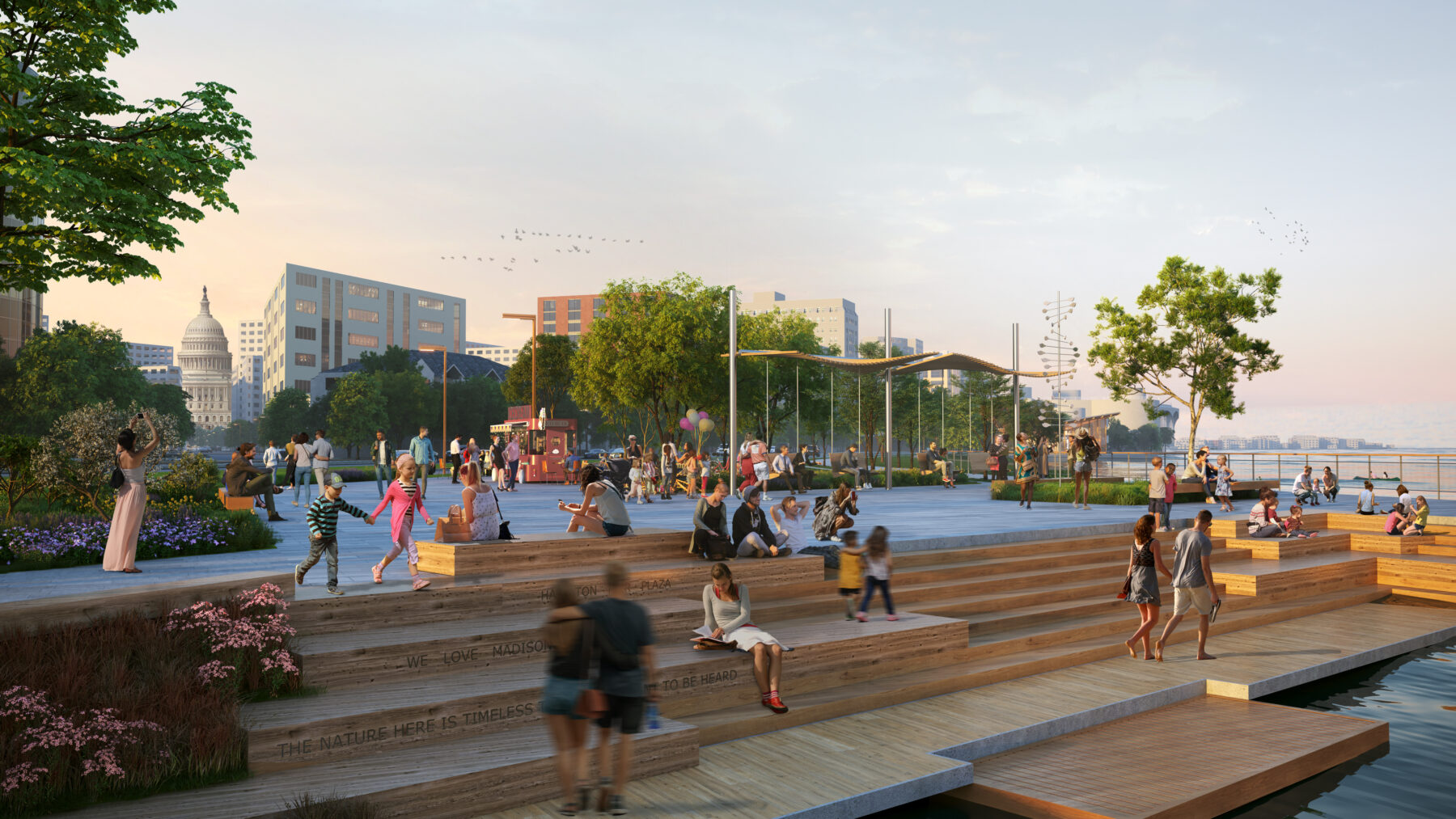
After eleven months of active community engagement, rigorous design studies, and committee review meetings, Sasaki’s plan for a visionary park on the shores of Lake Monona has won unanimous approval from the Madison Common Council.
Currently, Lake Monona’s waterfront is difficult to access because of its proximity to a busy roadway, John Nolen Drive, and due to significant grade change between the city and the water’s edge. Sasaki’s plan for a 17-acre linear park envisions new park space, amenities, and safe passageway for pedestrians and bikes, all while ecologically restoring the lake’s edge for generations to come.
The City of Madison selected Sasaki in an intensive design competition last May because of the plan’s commitment to sustainability, history, and integrating public feedback. Since then, Sasaki conducted extensive community engagement, submitted a master plan report to the city, and solicited feedback on the report from several commissions and committees, including the Transportation Commission, Madison Arts Commission, Urban Design Commission, Plan Commission, and Board of Park Commissioners. Throughout the project, Sasaki actively participated and led community engagements in six large public events, and processed over 8,000 public survey comments.
With Common Council approval, a plan refined by input from thousands of Madisonians has become the official blueprint for the waterfront’s future. “Madison is a beautiful city with a storied history and strong civic tradition,” says Anna Cawrse, principal at Sasaki. “Our original design drew deeply on the history, and the final plan drew from countless voices who showed up to neighborhood and committee meetings over the past year. This design is by and for the people of Madison.”
During the engagement process, the community emphasized the importance of restoring the waterfront. The plan will create a vibrant living edge, an environmental restoration strategy that protects and provides habitat for amphibious life in the region. New green infrastructure will clean stormwater before it enters Lake Monona.
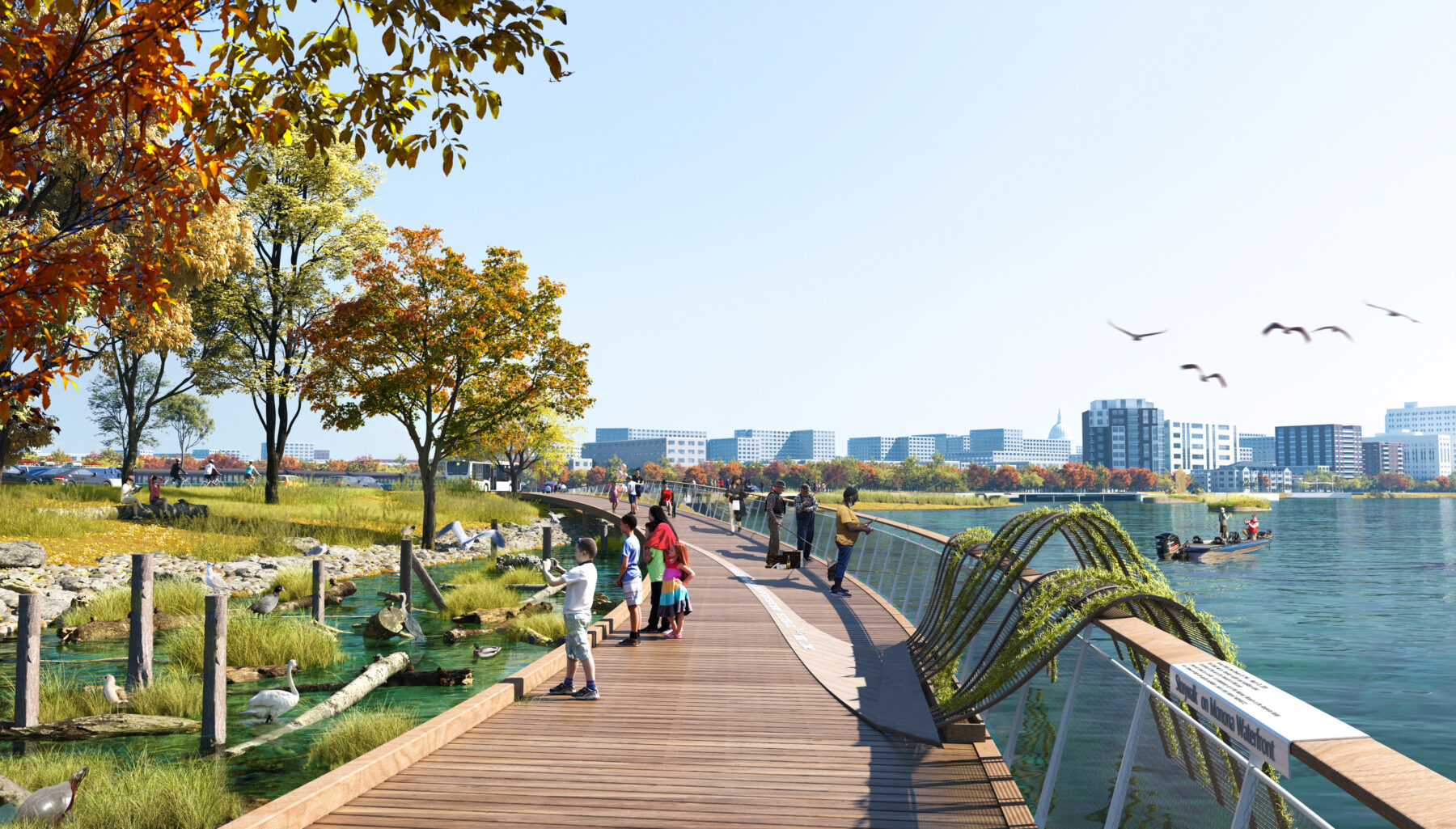
Fringe Wetlands will provide a protected environment for numerous fish species and create ecological education opportunities for the community
New pedestrian infrastructure will facilitate a stronger connection to Madison’s downtown and south neighborhoods. Bike and pedestrian crossings will be improved through the Community Causeway, a new trail system between the two anchoring green spaces in the plan: Olin Overlook, new park space in south Madison, and Law Park Ledge, the new amenity-rich park space walkable from downtown. Besides serving as a link between neighborhoods, the Causeway will be a destination in its own right, with multiple pockets of benches, vistas, and interactive educational kiosks. The proposed underpass at Lake Lounge also provides safer access to the lake-side trail system for pedestrians and bikers.
Olin Overlook becomes a green oasis in Madison’s urban landscape, which also provides open space to families and visitors in the area.
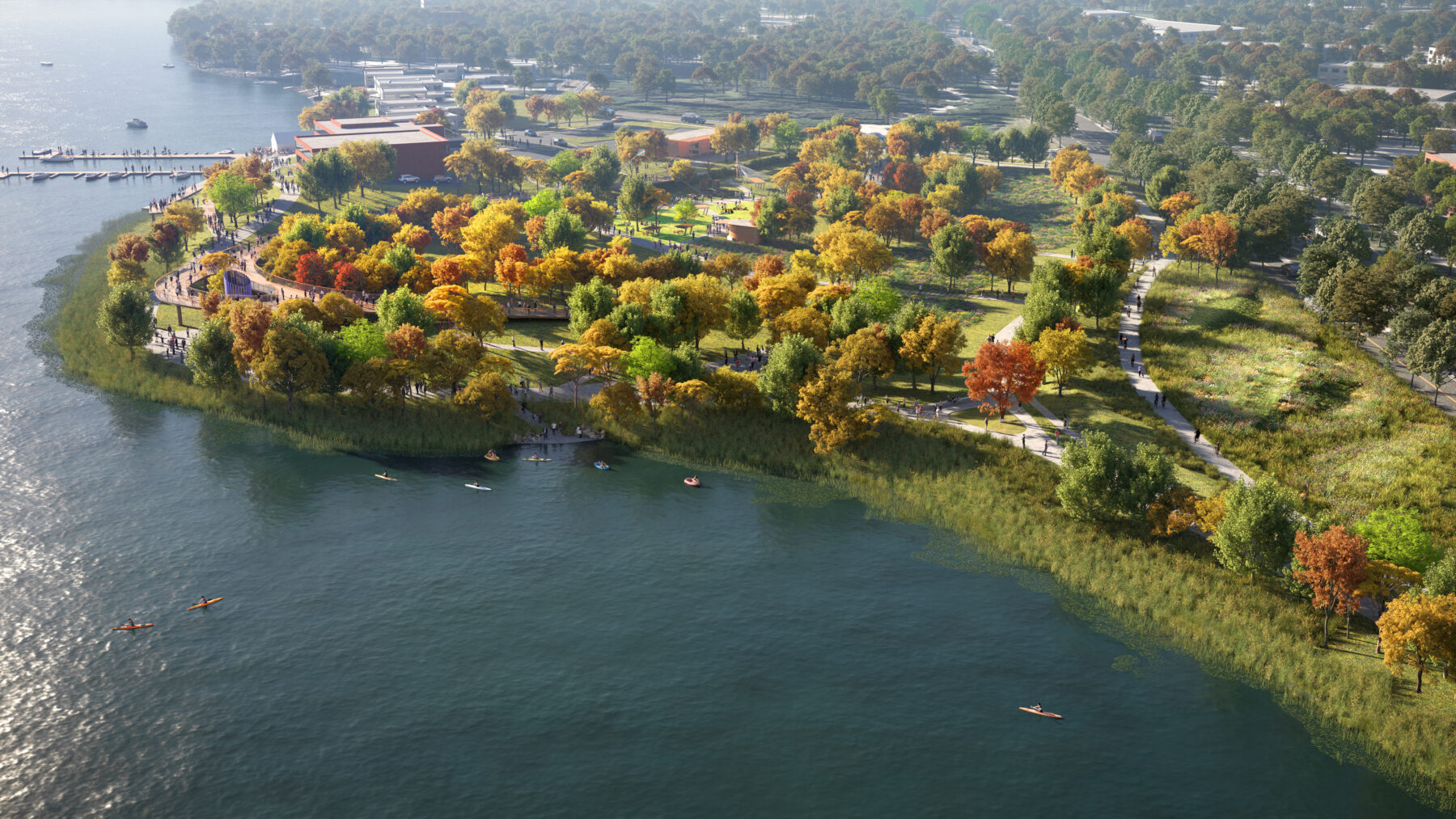
Olin Park is an urban oasis with diverse outdoor activities and ecological education opportunities.
Visitors will be able to explore the restored forest from above via the Canopy Walk, an accessible boardwalk that soars through the tree canopy, or learn about the park’s successional forest at a new interactive nature center. At the overlook above the water’s edge, visitors will also be treated to beautiful views of downtown Madison.
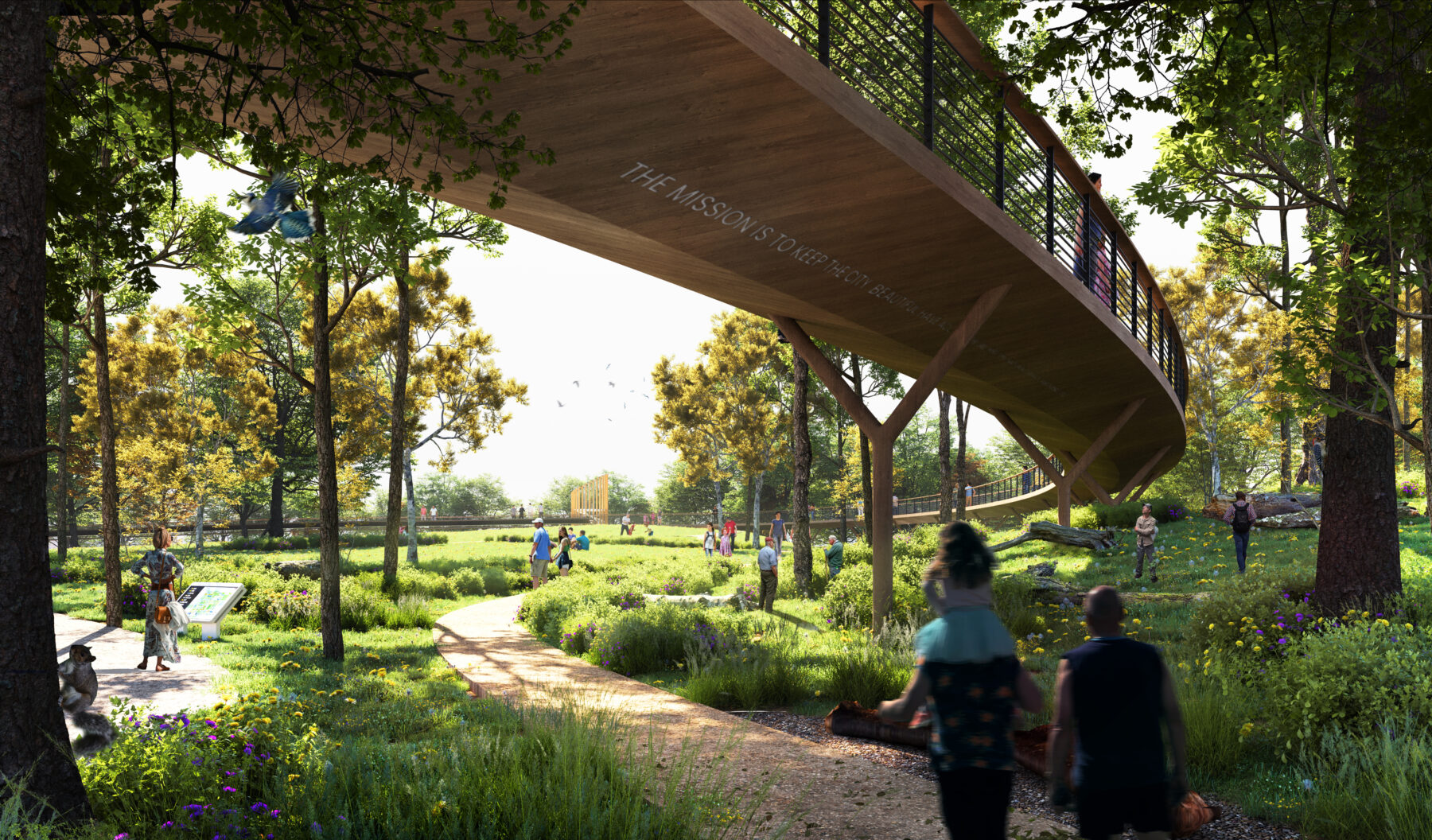
Olin Overlook features a new canopy walk through the forest
Just blocks away from Madison’s capitol at Law Park Ledge, a capped park over John Nolen Drive provides direct access to the lakefront and additional green space to the city. The elevated park will feature a wide range of amenities to boost the downtown economy, including an outdoor amphitheater, a community boat house, and a concession area. Law Park Ledge will support all kinds of large gatherings along the Lake’s shoreline, celebrating events like summertime waterski performances from the local Mad City Ski Team.
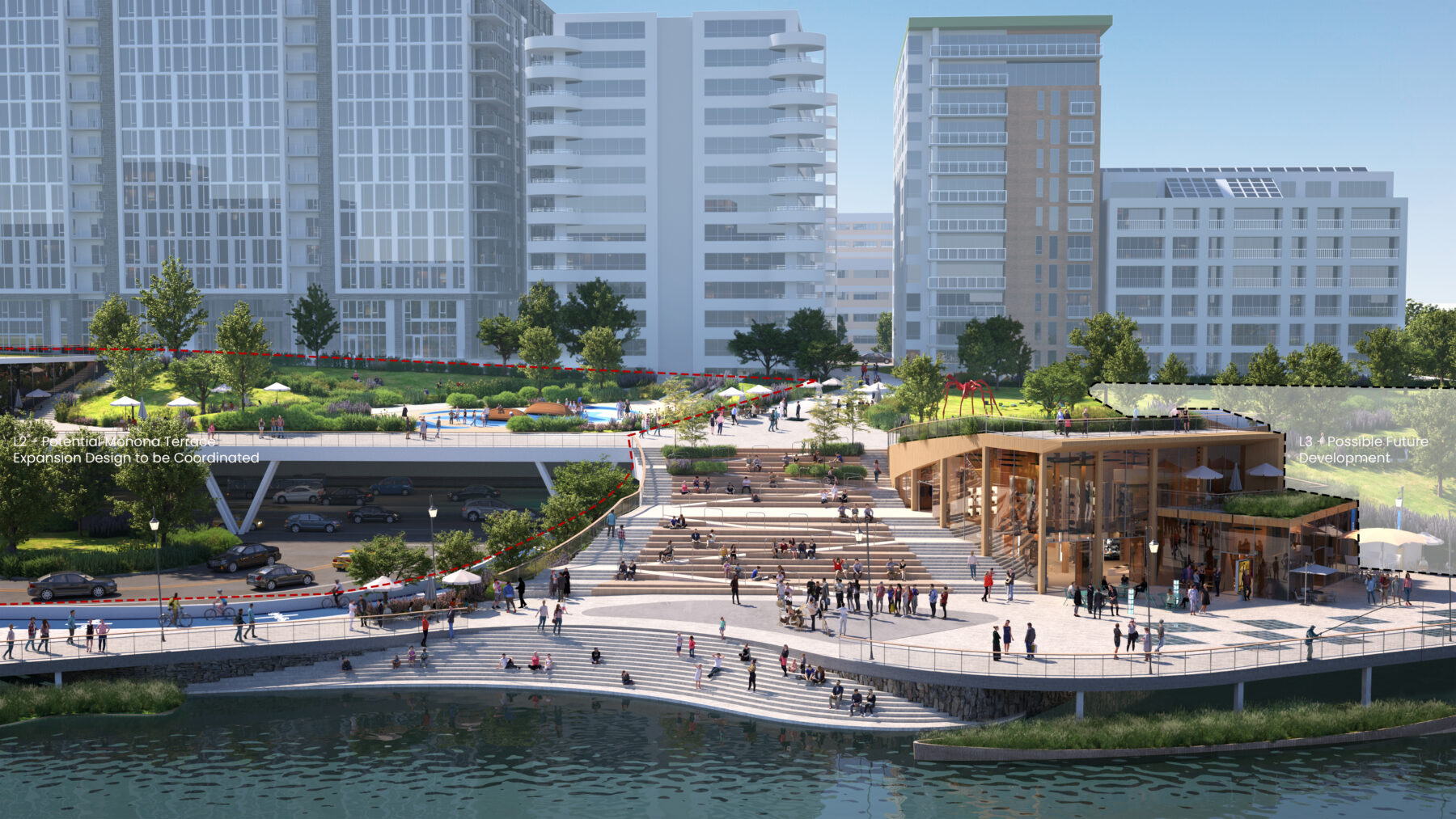
While current conditions make it difficult to safely and pleasantly access the lakefront from downtown Madison, Law Park Ledge invites visitors right to the water’s edge
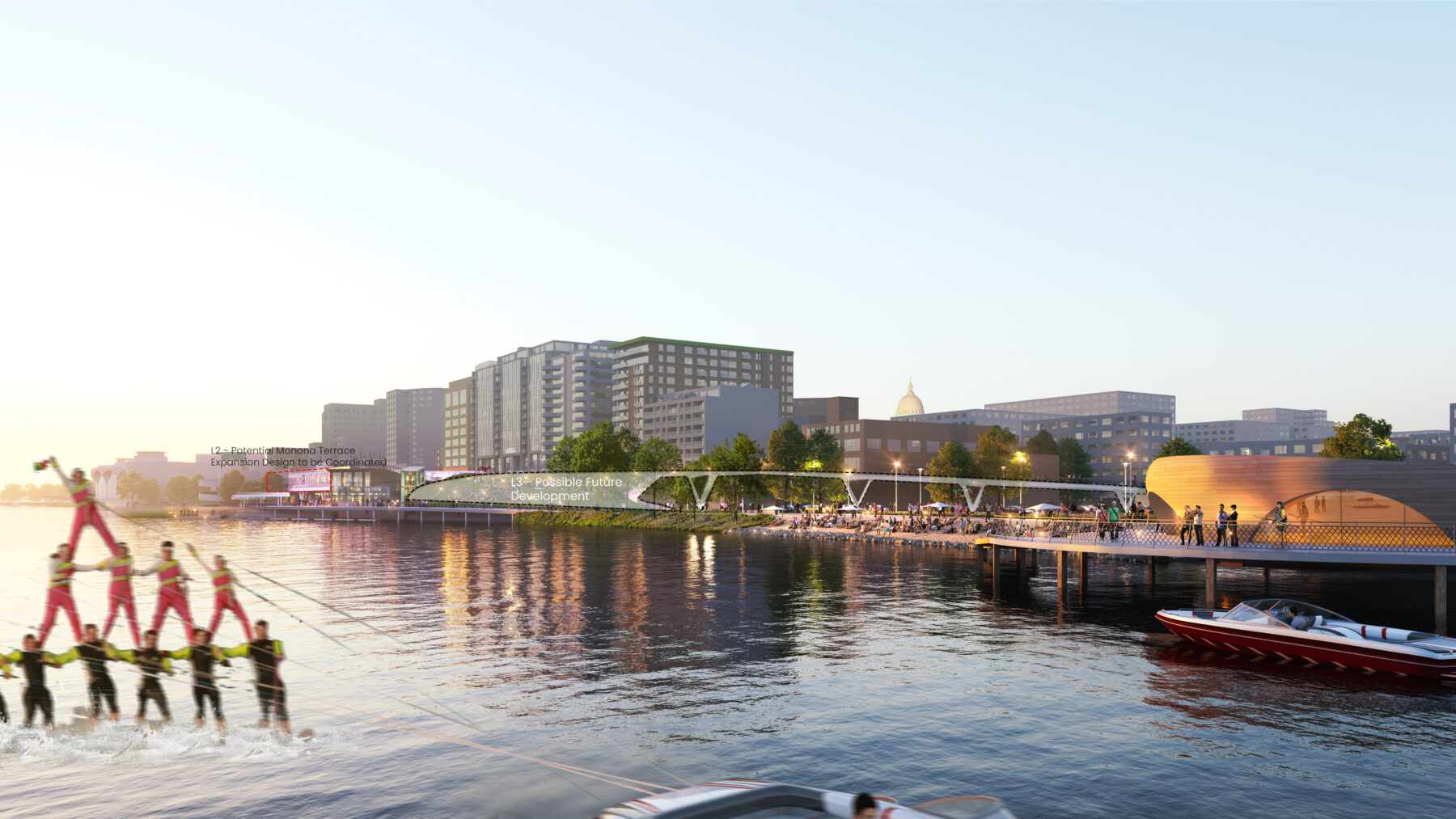
The lakefront will become a new venue for all kinds of community events, like water ski performances in the summer months
The approval from the Common Council marks the beginning of the detailed design and first phase of implementation for the waterfront plan. Sasaki will collaborate closely with the City to establish a practical phasing and implementation timeline in coordination with a federally-funded project to improve John Nolen Drive. Phase One design, which includes the Community Causeway and between the North Shore Drive intersection and Olin Park, is set to commence in summer 2024, with an anticipated groundbreaking in early 2026.
Phase One will mark the start of an exciting transformation of the waterfront into a connected and bustling waterfront that Madisonians have envisioned for generations.
Sasaki’s winning design will create an accessible, activated waterfront and establish a protected shoreline for wildlife to flourish
Sasaki designers reveal their proposal for the Lake Monona Waterfront Design Challenge in Madison, WI